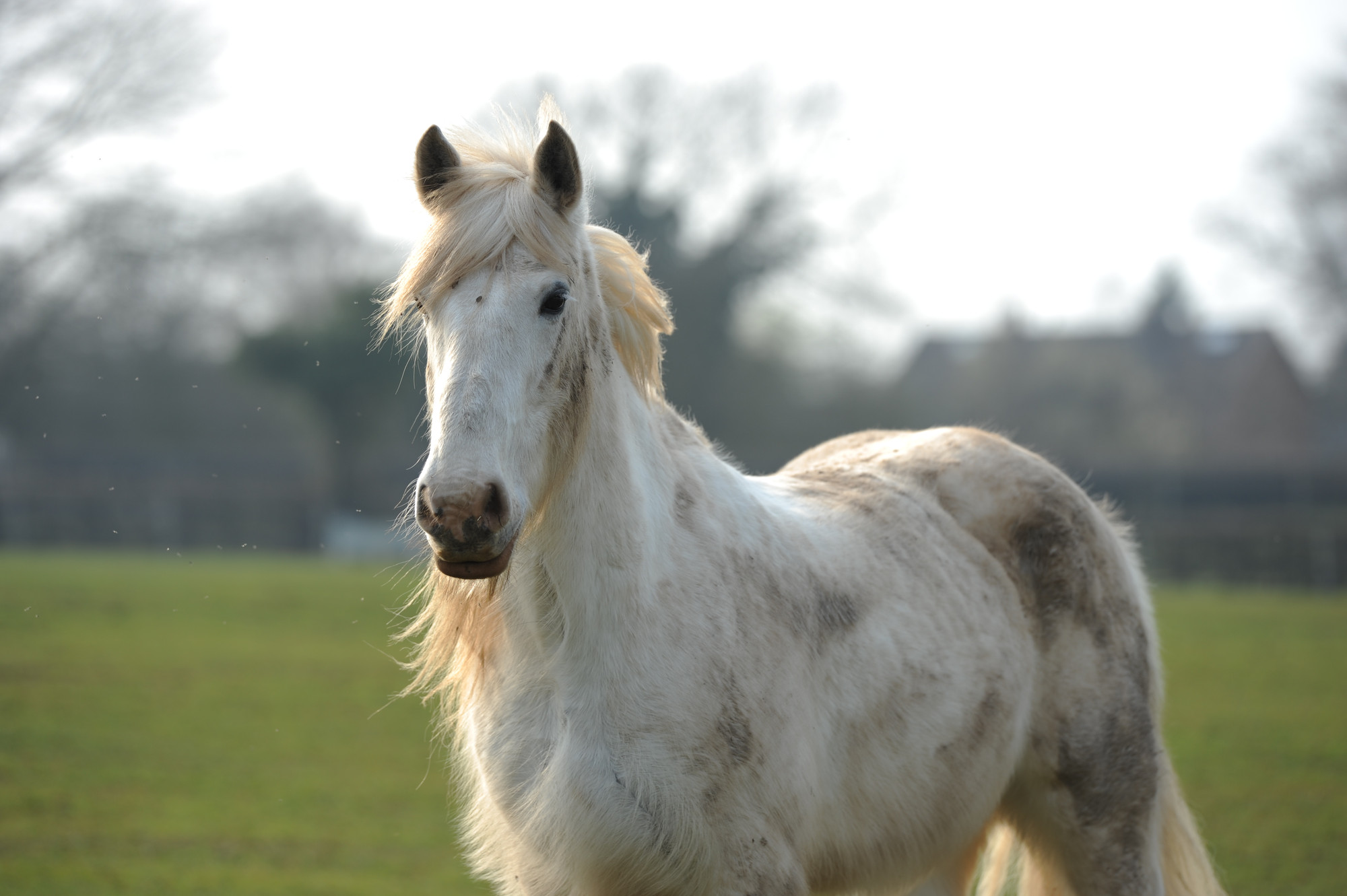
The field-kept horse
Where you keep your horse can affect their physical and mental wellbeing, even if they live out on grass.
Horses and ponies generally like to live out on grass for most of their time, where they have the freedom to graze and interact with other horses. Giving your horse plenty of turnout allows them to exhibit their natural behaviours as much as possible, helping to maintain their physical and mental wellbeing.
When keeping your horse in the field you'll need to ensure the fencing and gates are safe and secure, that the grazing is suitable and that there is appropriate shelter for your horse.
Suitable field requirements
Minimum field requirements
The general guideline for land requirements is one to one and a half acres per horse, plus one extra acre. But it’s also important to consider the individual horses that are using the field. You’ll need to factor in:
- the number of horses on the grazing
- the size and type of the horses
- your horse’s weight
- the quality of grazing
- the soil types (does the land freely drain or become very wet?)
- how well the pasture is maintained
- whether your horse is also stabled
Overstocking the field can lead to the field becoming ‘horse sick’, creating poor quality grass and soil. Giving your horse access to too much grass or very rich grazing could make them prone to weight gain. Both of these outcomes can impact their health.
You can control the amount of grass your horse consumes and maintain the health of the pasture by choosing a suitable grazing system.
Fencing
Safe and secure fencing is vital to preventing injury to your horse. It will also minimise the risk of escape and straying. Whichever fence type you choose should be well constructed and maintained to ensure they’re safe and secure. Check your fencing daily for damage.
Choosing a fence type
When choosing fencing, you’ll need to consider cost, any existing fencing or boundaries, and the type of horses or other livestock you may have in the field. You may want to consider if you'll need to change the field structure or want to implement strip grazing. If so, it’s easier to use more flexible fencing (such as electric tape and temporary posts) for your internal fencing.
Important
Avoid using barbed wire or plain wire fencing as these are extremely hazardous to horses. If this fencing is already in place or you are not able to change it, you can line it with an alternative fencing such as electric tape.
The most common type of fencing for horses are:
Hedging
Many fields will have some form of hedging as part of the boundary. Hedging is a great natural boundary and can offer some natural shelter and foraging opportunities for your horse.
Hedges can become very thin during the winter months and are not always enough as a secure boundary. Instead, you can place a secondary fence line to secure it. Remember to regularly check your hedges for any poisonous plants or trees.
Wooden post and rail
Post and rail fencing is durable, easily visible and aesthetically pleasing. Due to the strength of the wood it’s safe and secure. Wooden fencing is a much more visible obstacle for horses, so they’re less likely to try and push through.
Post and rail can be expensive to install and needs ongoing maintenance. Some horses may also be tempted to chew the wood.
Electric fence
Electric fencing is easy to install and move, making it useful for strip grazing or dividing fields. It’s more affordable than permanent fencing and can be used in combination with other fences. Horses who tend to ignore fencing may be more deterred by an electric fence due to the mild shock it delivers.
Electric fences need to be set up correctly to be safe and effective. Incorrectly installed electric fence can cause horses to become entangled.
Due to their lack of strength and durability, temporary electric fence posts should not be used as a sole boundary fence. Strong winds or a horse who does not respect the fence can easily knock it down. Instead, you can use electric fencing in combination with other fence types, such as post and rails.
Stock fencing
Stock fencing can be used for cross grazing as it's suitable for a range of animals using the field. It’s important to buy stock fencing with small mesh – this prevents your horse from getting their hooves caught in the mesh. If your field already has stock fencing with large mesh, you can line it with a secondary fence.
Synthetic fencing
Synthetic fencing is made of strong plastics such as polypropylene. This material allows the fence to flex, reducing the risk of injury and making it easy to install. It’s also hardy against tough weather conditions, as it does not fade or become brittle.
Synthetic fencing can be used on its own or in combination with other fencing such as stock fencing.
Gates and gateways
Gates need to be at least 3.6m wide and around 1.25m high. They should open inwards for safety. Metal gates are easier to maintain and also lighter to handle, but wooden gates are also common place and suitable. Attaching small mesh to the lower half of a gate is a good idea as the mesh prevents horses from putting their legs through the rungs.
Hinges and latches should be secure and safe without protruding into the field where they can cause injury. The gate should be easy for you to open without risk of either slamming against your horse or swinging out of your reach.
Where several horses are turned out together you can use a double-gate system to reduce the risk of horses escaping . This is also useful where gateways open and close onto roads.
Ideally, gates should be located away from water troughs, shelters and corners of the field where horses may gather. The ground in these areas can quickly become poached during the winter months, and this may affect safe access into and out of the field.
Water
Fresh, clean water should be available at all times. Containers of water should be free from sharp edges and easy to clean – automatic water troughs and rubber buckets are best. Make sure enough water is available for the number of horses in the field to access easily.
Whether you’re using buckets or troughs, be sure to clear them of algae, leaves or other debris and ice during cold weather daily.
Important
Natural water sources, such as streams and ponds, are not suitable as a main water source. They are at risk of contamination, can be of varying quality and may be difficult for horses to access and exit safely. If in any doubt, fence any natural water supply off.
Shelter
All fields should have the opportunity to shelter from the elements, strong sunlight and flies. This shelter should be suitable for both winter and summer seasons. Natural hedges and trees can provide some shelter but they may be less effective during the winter months, especially when they lose leaves. The shelter should be positioned to provide protection from prevailing winds, and placed in a well-drained area of the field.
Man-made shelters can range from simple windbreaks to enclosed field shelters. A windbreak can be placed within the fence line or placed as a freestanding construction. Enclosed shelters must be big enough to house all horses in the field. It’s essential that the entrance is large enough for any horses to exit freely and not become trapped inside by others.
Shelters may benefit from an area of hardstanding in front, ideally with a fence to enclose the area. Ensure the shelter is safely constructed and secured into the ground – this will reduce the risk of them moving, being damaged by horses, or being blown over in strong winds.
Horses in the field
Company
Horses are herd animals by nature and prefer to live in social groups. It's important to make sure they have at least one compatible companion, ideally of a similar age, size, type and routine.
If you're keeping only a pair of horses together, you’ll need to have a plan if one horse is taken out of the field (to be ridden, for example). A companion horse left alone can become distressed if they are not used to being separated.
Human interaction is also an important part of socialisation for horses. Spend lots of time handling your horse, especially when you do not intend to ride. Grooming will build your bond and provide enrichment. Even giving them a good scratch in the field can ensure they'll be happy to be caught next time.
Outdoor enrichment
Enrichment does not have to be restricted to the stable. There are some simple things you can do to add variety and fun to your horse’s life outdoors:
- Use food to encourage your horse to explore different areas. You can spread forage (such as hay or oat straw) in lots of small piles around your horse’s field. This helps to keep your horse moving, makes feed rations last longer, and reduces poached areas in the field.
- Take your horse for a walk in hand and let them graze new pastures. The mix of different grasses and herbs will add some variety to their diet.
- Place branches from non-poisonous trees (such as birch or willow) in their field — horses can chew the bark and use them for a good scratch. Putting something new in the field can often spark curiosity and gives horses the opportunity to explore something new.
- Try some different exercises with your horse. If they’re motivated by food, grab some tasty treats and encourage them to do some gentle stretching, such as bending their neck to the left and right.
- Give your horse a play ball that they can pick up, throw and kick around. This gives them an outlet for excess energy if they are in a playful mood and can encourage them to stay active.
Feeding
Grass is often the sole part of a horse’s diet. Whether it’s fresh from the field or fed as conserved forage (such as hay or haylage), grass is an important source of energy, nutrients and fibre.
In the winter you may need to give hay and additional hard feed depending on how much grazing is available. If the grass has a lower nutritional value, you can provide vitamin and mineral supplements.
Hay can be fed loose on the ground or in safely tied hay nets. Remember to provide more piles or nets than horses in the field to avoid fighting. Hay racks can be used, but make sure they are designed specifically for horses. Hard feed can be given in rubber of plastic feed bowls which are then collected back up once the horse has eaten.
Rugs
Many horses are hardy and will be able to live outdoors without a rug all year round, as long as they have a good natural coat and access to shelter. If your horse is not rugged, keep grooming to a minimum. This will allow the grease in their coat to provide some natural protection.
Rugs provide good protection for horses that are less hardy, elderly or for those who have been clipped. During warm weather, a fly rug is useful for horses who are easily irritated by biting insects.
Field maintenance
Keeping horses in the field requires ongoing maintenance of the pasture. Getting into a regular routine of daily, weekly and seasonal checks and maintenance will help you to keep your pasture as healthy and safe as possible.
You can find out how to maintain the pasture for your horse in our pasture management guide.
Page details
Reviewed
• 10 October 2023
Next review
• 12 October 2026






